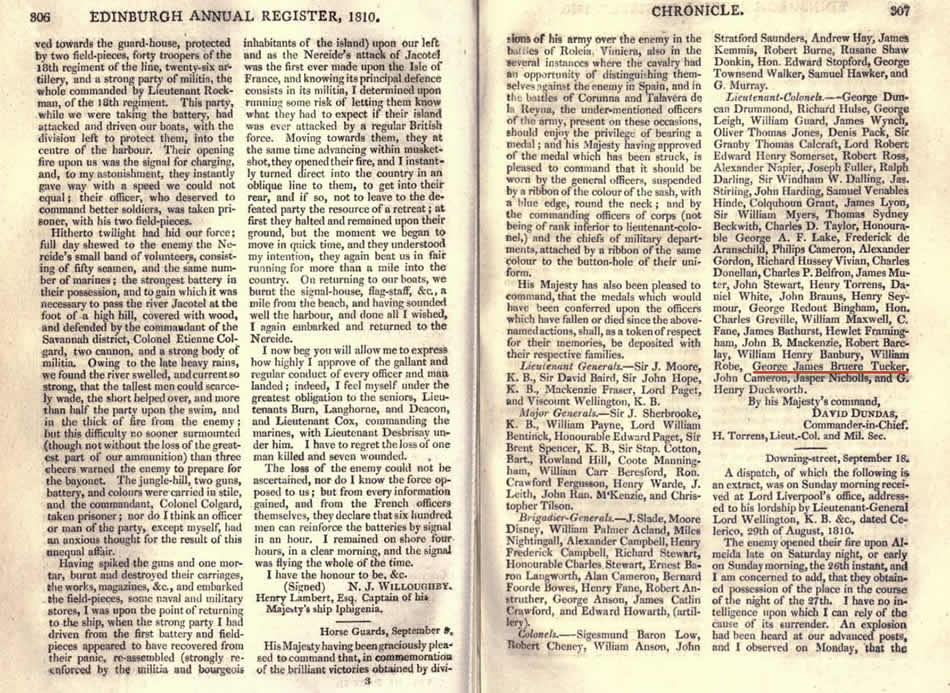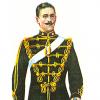-
Posts
574 -
Joined
-
Last visited
-
Days Won
2
Content Type
Profiles
Forums
Blogs
Gallery
Events
Store
Posts posted by Trooper_D
-
-
Hello,
This medal should shared to all troops. which had Bavarian King Ludwig III as owner.
The end of the war prevented the deal out. In 1922 the coins were found and given to Kronprinz Rupprecht, who spend this medals after the burial of King Ludwig III to loyal bavarians. It was allowed to fix this coin to the medal bar, as a civillian bavarian decoration.
Sorry about my bad english, but it is difficult with less knowledge and a bad translatorprogramm this special themes to translate.
Spolei
Don't worry about your English - this was a fascinating story and deserved the wider telling you have given it. Many thanks.
0 -
Hello,
it was allowed to fix this coin on bar.
The ribbon was the same as the Jubiläumsmedaillie
The coin was given without any ring.
Spolei
Do we know (a) why a coin was given, rather than a medal, and (b) why the recipient was entited to wear it like a medal? Was it issued to all those who were entitled to a Jubilee medal or did it have a wider circulation? Sorry for all these questions but this seems like an interesting anomaly.
0 -
Agreed. I did a search as well and found very, very little. Which is why I went after these photos.
Now that's thinking strategically
 Congrats on winning the photos btw.0
Congrats on winning the photos btw.0 -
IrishGunner
I think the photo below (from http://www.indiannet.eu/home_resistance/gbpart4.html) confirms the attribution of your first photo. It is of a Czech artillery lieutenant called Rudolf Pernický and is dated to 1938. Although it is an officer's uniform, note the buttons with the crossed swords and the same shaped collar and collar tabs.

What I have discovered in all this is that images on the Internet of inter-war years Czech soldiers appear to be as rare as hens' teeth!
0 -
Slightly more useful than my last answer, post #30 on the page I've linked to shows the 'crossed swords' button shown in the first photo and identifies them as Czech, without giving a date: http://www.treasurenet.com/forums/what/247799-old-metal-buttons-2.html.
0 -
IrishGunner
The sign in the second photo says 'Happy Christmas 1925' in Czech, so the answer to the question posed in your thread title is, yes. I suspect you knew that already and are actually after a unit identification - which I can offer no help with - but I thought I would score the easy points before anyone else :)
0 -
Here is a picture of duke Johann Albrecht wearing this haube...
Wonderful - the icing on a very calorie-rich cake!!
0 -
Adler
Reading each of your posts makes me more and more interested in pickelhaubes than I feel comfortable with. It's like I am being sucked into a compulsion that I will be unable to control - this latest missive about this beautiful helm may just be the straw that breaks the camel's back
 Please, no more!!
Please, no more!![in short: I love it!]
0 -
Worthpoint reports that a similar badge, but with the red and white colours reversed, was sold on eBay in 2007. It was described as a "Homefront Royal Army Chaplain's Dept breast star" made by Agnew.
http://www.worthpoint.com/worthopedia/homefront-royal-army-chaplains-dept-breast-star
0 -
Chris
It looks to be an Eisernes Verdienstkreuz, which is discussed in this thread,
http://gmic.co.uk/index.php/topic/15471-my-first-eisernes-verdienstkreuz/
As this was given to ORs only, the rank must be for a Korporal, as shown here (and as opposed to an Oberleutnant, which I find confusingly similar; fortunately as it is an OR award, the possibility is removed),
http://www.austro-hungarian-army.co.uk/badges/badges.htm
GMICers more learned than me will comment on the remainder of your queries.
I hope that is of some help
Trooper D
0 -
It's the little slider on top of the rear spine that runs over the back of the helmet. When you slide it down, a small opening in the spine comes free and air can stream into the helmet. In the helmetshell are a few holes just underneath the slider (only visible from the inside of the helmet)
Spotted! Thanks for this fascinating information.
0 -
Hmmm... nobody likes artillery pickelhauben
 ...
... Adler 1
Au contraire! I am sure that I am not the only one who is - almost - lost for words at seeing such a wonderful example.
I do have one question, however. You mention the distinctive nature of the 'rear spine vent'. I am having some difficulty understanding exactly what this is and where it is located so some clarification would be most welcome. Thank you in advance.
0 -
While George never had to hide in the Bolivian Embassy in London...
To be fair to Bolivia, the Australian wretch, to whom you indirectly allude, is actually holed up in the Ecuadorian embassy. Same difference, though
 0
0 -
Actually there was a lot of trade between the Sahel states and the Mediterranean coast. In earlier periods this consisted of gold and slaves and salt. While in later periods other items like leather from the Hausa states was heavily traded (known as Moroccan leather in Europe at the time) as well as textiles. A somewhat more bizarre item, but heavily in demand in Europe, was ostrich feathers!
Going back down the routes were a variety of goods which included blades. This trade existed during the medieval period and was the reason for some of the earlier African empires like Mali or the Songhai empire sprang up in the regions they did.
Many thanks for this brief but revealing exposition. Once again, it is a reminder that we mustn't think in terms of rigid boundaries when discussing the medieval world - trade links were much more extensive over a wider geographic area than one might readily assume.
For the medieval blade of mine - hopefully it doesn't violate the forum rules if I just put a link to my website. The blade features a cross fourche and split upright cross.
There is sadly not a definite book on these swords although there are some good article ("European Blades in Tuareg Swords and Daggers" by Briggs) but oddly enough since you mention it, one is in the works.

God speed to 'whoever' might be writing the book. I, for one, look forward to it (but the website is a good substitute in the interim).
0 -
Of the swords I posted #1, 3 and 6 have European blades. Several of them quite old (#3 is medieval).
How, in Heaven's name, would they have found their way this far south?? Does the medieval one have an armourer's mark, on it, as a matter of interest?
Has anyone written the definitive work on these swords - or are you still completing the final chapter?
 0
0 -
To answer the question of use and function ...
Thanks for your fascinating answer, ISPN. I never even realised this was a field of study but am now looking forward to seeing more of your photos to learn more!
0 -
I thought some of the other members might enjoy seeing a few items from my collection.
I second Brian in thanking you for showing us these wonderful swords.
I have a question: although they look beautiful, to my eye they don't look very robust so my question is, how effective do you judge one of these swords would have been in combat or were they more about 'display' and ceremony?
0 -
-
Paul
I think that these are a souvenir of a pilgrimage to the Greek Orthodox Church of Jerusalem. Have a look at the coat of arms on this Wikipedia page (top right).
http://en.wikipedia.org/wiki/Greek_Orthodox_Church_of_JerusalemEdited to add: this link is the clincher, I think (but turn your volume down!) http://www.jerusalem-patriarchate.info/
0 -
I am looking at the whole situation and wondering whether or not the medal was presented to his father, Henry St. George Tucker (East India Co)
That would certainly be in accordance with the bit which says,
His Majesty has also been pleased to command, that the medals which would have been conferred upon the officers which have fallen or died since the above-named actions, shall, as a token of respectfor their memories, be deposited with their respective families. [my emphasis]
Good luck with your continued search. Please let us know what you find.
0 -
For your interest, Kerry and others, I have attached pages 306-307 of volume 3, part 2 of the Edinburgh Annual Register of 1810 (actually published in 1812), which is available from
http://archive.org/stream/edinburghannpt2v03scotuoft#page/306/mode/2up
It lists the senior officers who are to receive (some posthumously) the medal for Roleia and Vimiera. I have underlined George James Bruere Tucker's name.Edited to add: Although I haven't looked, I presume this would have been announced in the London Gazette, as well.
 0
0 -
Spasm
I think that the case will turn out to be a red herring; merely a convenient place to store them rather than having any original association with the miniature chain. That aside, I am waiting with baited breath to see detailed photos of this fascinating miniature chain, itself - I confess I have a weakness for them!
0 -
Any thoughts on the producer?
The label inside the box is that of the Goldsmiths & Silversmiths Co. Ltd of 112 Regent St., London. According to this site,
http://www.silvercollection.it/ENGLAGOLDSMITHS&SILVERSMITHS.html
they were established in 1880 and merged with Garrards in 1952.
0 -
Fascinating. Most propaganda caricatures seem to be far less flattering than these!
0




Post WW1 awards of Austro-Hungarian decorations
in Austro-Hungarian Empire
Posted
What Valter said x 2. These are wonderful insights into a very interesting area of study, Tifes. Thank you to you and the other contributors to this fascinating thread.